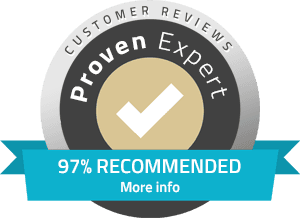To determine if your SEO efforts are effective enough to boost traffic, you need to monitor various performance metrics and key indicators over time. Here’s a step-by-step guide to assessing the impact of your SEO strategies:
1. Track Organic Traffic
Google Analytics: Use Google Analytics to track changes in organic traffic to your website. Look for increases in the number of visitors arriving via search engines.
Time Period Comparison: Compare data over different time periods (e.g., month-over-month, year-over-year) to identify trends and growth patterns.
2. Monitor Keyword Rankings
Keyword Tracking Tools: Use tools like Ahrefs, Semrush, Moz, or Google Search Console to monitor the rankings of your target keywords.
Ranking Improvements: Look for improvements in the positions of your keywords in search engine results pages (SERPs). Higher rankings typically lead to more traffic.
3. Analyze Click-Through Rate (CTR)
Google Search Console: Check the CTR for your keywords and pages in Google Search Console. Higher CTRs indicate that your titles and meta descriptions are compelling and relevant to search queries.
Improvements Over Time: Track changes in CTR to see if your SEO efforts are making your search listings more attractive to users.
4. Evaluate Bounce Rate and Dwell Time
Bounce Rate: Analyze the bounce rate (the percentage of visitors who leave your site after viewing only one page) in Google Analytics.reduced bounce rate indicates that users are interested in your content.
Dwell Time: Monitor how long visitors stay on your site. Longer dwell times generally indicate that users find your content valuable and relevant.
5. Check Conversions and Goals
Conversion Tracking: Set up goals in Google Analytics to track conversions (e.g., form submissions, product purchases, newsletter sign-ups).
Conversion Rate: Assess whether organic traffic is contributing to your conversion goals. An increase in conversions from organic traffic indicates that your SEO efforts are driving qualified leads.
6. Assess Backlink Profile
Backlink Analysis Tools: Use tools like Ahrefs, Semrush, and Moz to analyze your backlink profile.
Quality and Quantity: Look for increases in the number of high-quality backlinks to your site, which can boost your domain authority and improve rankings.
7. Measure Page Load Speed
Performance Tools: Use tools like Google PageSpeed Insights, GTmetrix, or Pingdom to measure page load speed.
Improvements: Faster load times can improve user experience and positively impact your rankings and traffic.
8. Analyze User Engagement Metrics
Pages Per Session: Track the average number of pages viewed per session. Higher engagement often correlates with better user experience and higher rankings.
Session Duration: Monitor the average duration of user sessions. Longer sessions typically indicate more engaging content.
9. Review Content Performance
Popular Content: Identify which content pieces are performing best in terms of traffic, engagement, and conversions.
Content Updates: Regularly update and optimize your content to maintain its relevance and ranking potential.
10. Competitor Analysis
Competitive Benchmarks: Compare your website’s performance against competitors using tools like Ahrefs, Semrush, or Moz.
Industry Trends: Understand industry trends and how your site stacks up in terms of traffic, rankings, and backlinks.
- +91 8300 665471
- info@vestaoneup.com



